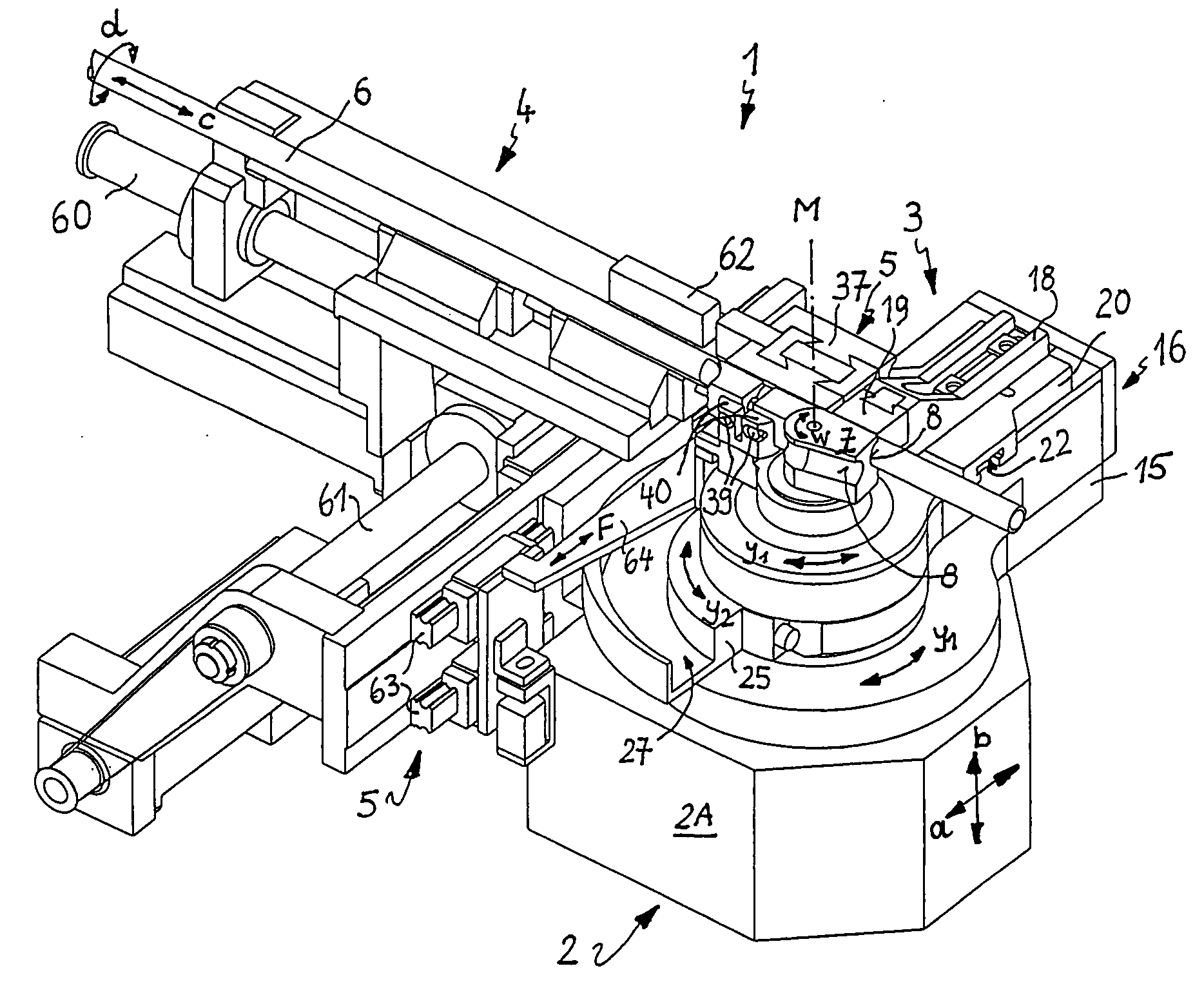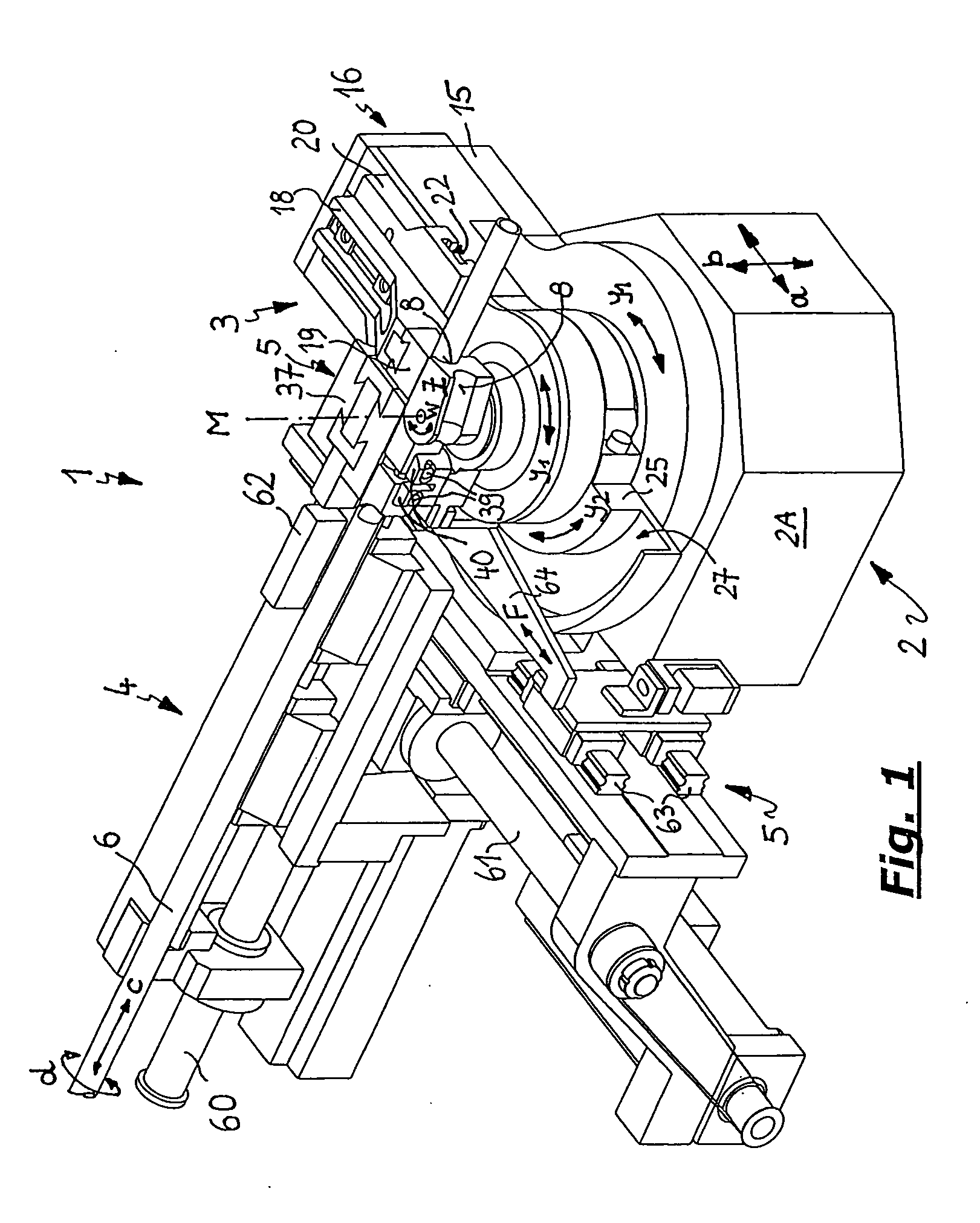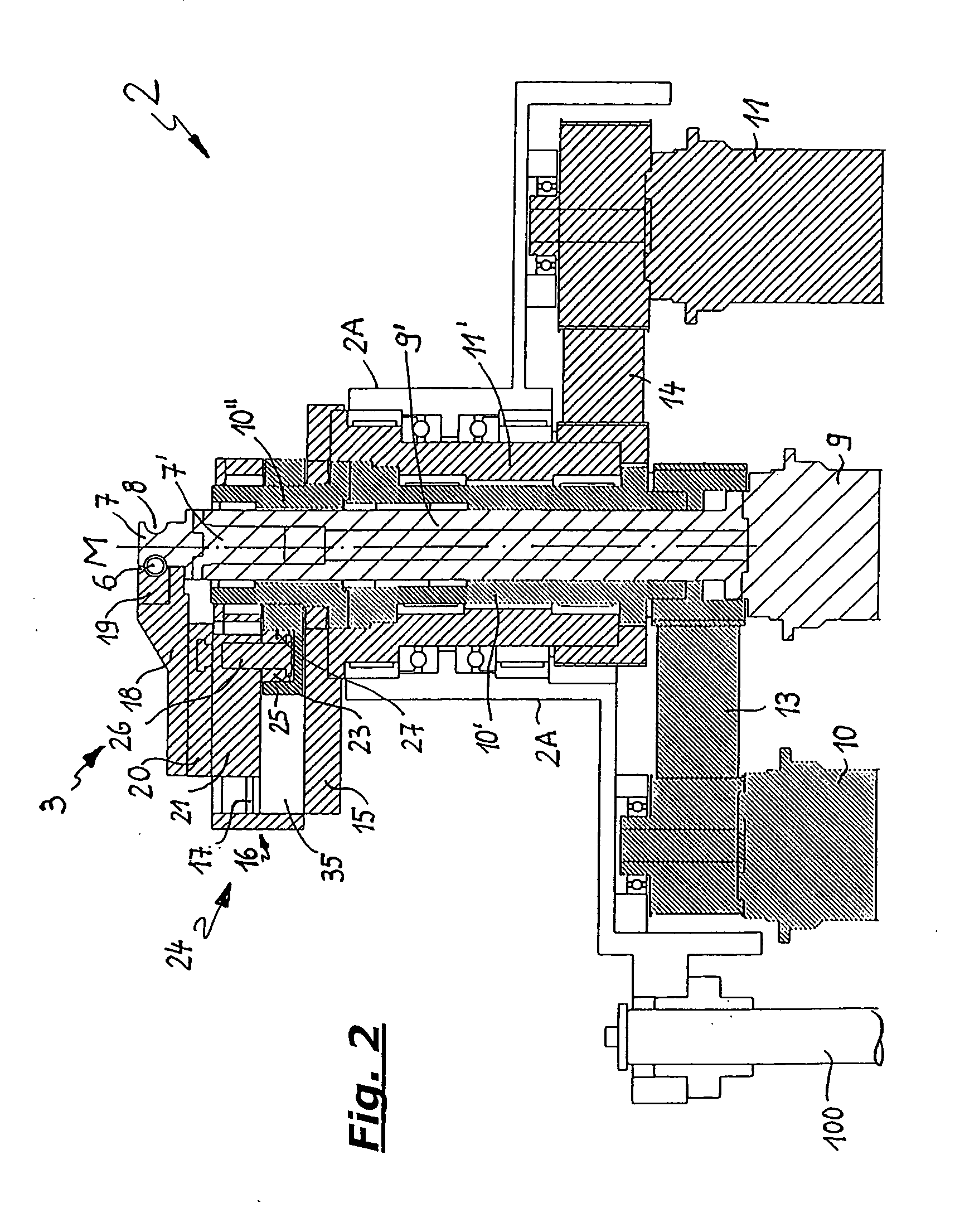Machine for bending rod-shaped or tubular workpieces
a technology for which is applied in the field of tubular workpieces and workpieces machines, can solve the problems of occupying more space than desired, a relatively large width of clamping devices, and a complicated structure, so as to achieve compact and space-saving design, simplify the design of bending devices, and improve the effect of compact construction
- Summary
- Abstract
- Description
- Claims
- Application Information
AI Technical Summary
Benefits of technology
Problems solved by technology
Method used
Image
Examples
Embodiment Construction
[0041] In the following description of the figures, the portrayals in FIGS. 1 through 12 refer to a first, especially advantageous embodiment of a bending device, while FIG. 13 portrays (in oblique perspective view) a different embodiment of a bending head on such a bending apparatus, and FIG. 14 is a top view showing the principle of yet another embodiment of a bending head. In all of the figures, including when they relate to modified embodiments, the same reference symbols are used for the same parts.
[0042] We will first examine FIGS. 1 through 12, which portray a first embodiment of a bending apparatus.
[0043]FIG. 1 shows a perspective view (obliquely from in front and above) of a bending device 1 shortly before a right-hand bend is executed, while FIG. 12 shows the same oblique perspective portrayal of the same bending apparatus 1, but in the starting state before a left-hand bending procedure.
[0044] As can be seen from FIG. 1, bending device 1 includes essentially three impo...
PUM
| Property | Measurement | Unit |
|---|---|---|
| angle | aaaaa | aaaaa |
| distance | aaaaa | aaaaa |
| shape | aaaaa | aaaaa |
Abstract
Description
Claims
Application Information
 Login to View More
Login to View More - R&D
- Intellectual Property
- Life Sciences
- Materials
- Tech Scout
- Unparalleled Data Quality
- Higher Quality Content
- 60% Fewer Hallucinations
Browse by: Latest US Patents, China's latest patents, Technical Efficacy Thesaurus, Application Domain, Technology Topic, Popular Technical Reports.
© 2025 PatSnap. All rights reserved.Legal|Privacy policy|Modern Slavery Act Transparency Statement|Sitemap|About US| Contact US: help@patsnap.com



